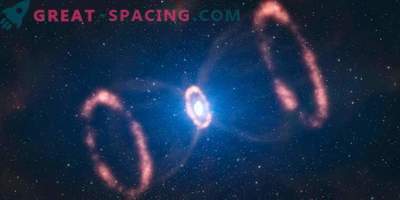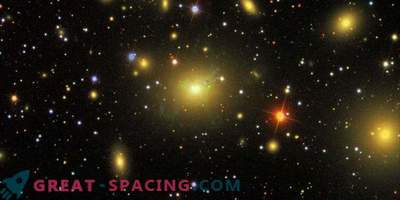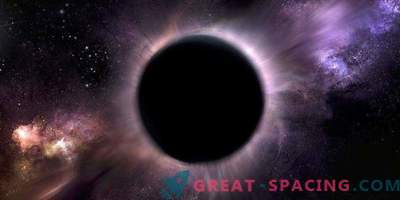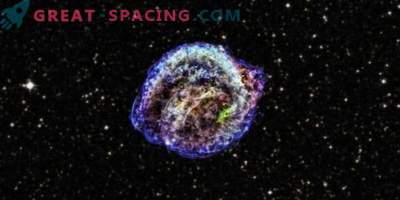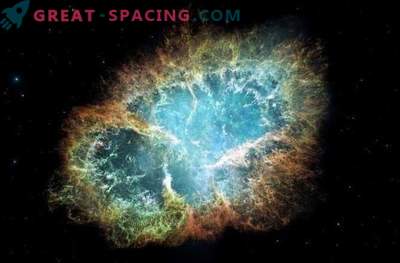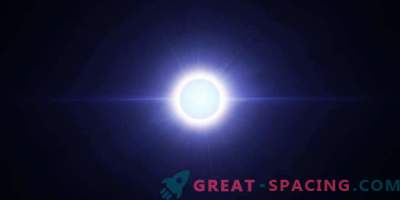
Researchers have noticed that white dwarfs with masses close to the most stable index (Chandrasekhar limit) are likely to produce huge amounts of manganese, iron and nickel after rotating around another star and exploding as a new Ia type supernova.
The Ia-type supernova is a thermonuclear explosion of a carbon-oxygen white dwarf living in a binary system with a nearby star. In space, such objects are considered the main “manufacturing factories” to create elements of iron ore type, including manganese, iron and nickel, as well as some intermediate mass elements, such as sulfur and silicon.
But now, researchers can not agree on which binary systems activate the white dwarf to an explosion. In addition, recent large-scale reviews have revealed a serious variety of nucleosynthesis products - the creation of new atomic nuclei from existing nuclei in a star by nuclear fusion, Ia-type supernovae, and their residues.
In order to understand the reason for the differences, the researchers conducted simulations using the most accurate scheme for the multidimensional hydrodynamics of Ia-type supernova models. They studied how models of chemical abundance and the formation of new atomic nuclei from existing nucleons depend on the characteristics of the white dwarf and its predecessors.
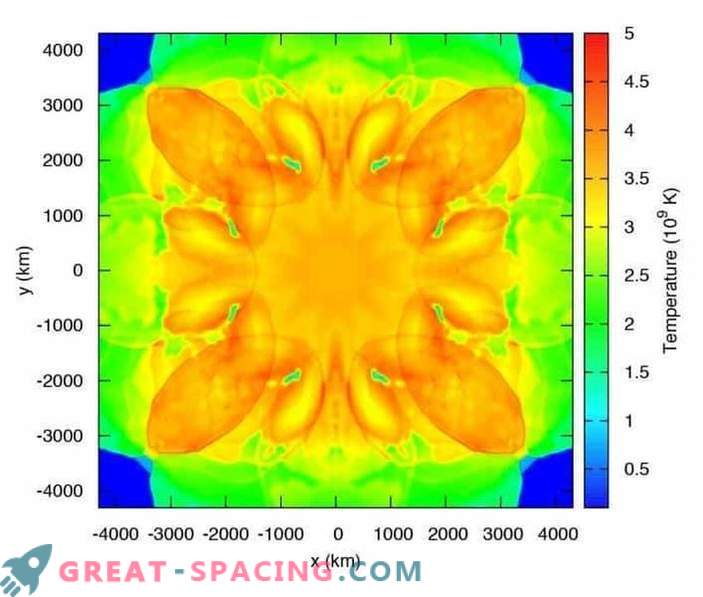
A color graph of the temperature distribution of the reference model of the supernova Ia-type a second after the explosion. To obtain the result, a deflagration model with a detonation transition is used.
It is also important that this is still the largest review of the parameters for the Ia-type supernova using a white dwarf and Chandrasekhar limit. Particularly interesting was the case with the remainder of the supernova 3C 397. It lives at a distance of 5.5 kpc from the center on the galactic disk. It was possible to establish that the ratios of the content of stable manganese / iron and nickel / iron are two and four times higher than those of the Sun. These values can be explained if the mass of the white dwarf is above the Chandrasekhar limit and there is a high level of metallicity.
The findings suggest that 3C 397 residues cannot be the result of an explosion of a white dwarf with a relatively low mass. Moreover, the white dwarf should have a metallicity higher than the sun.
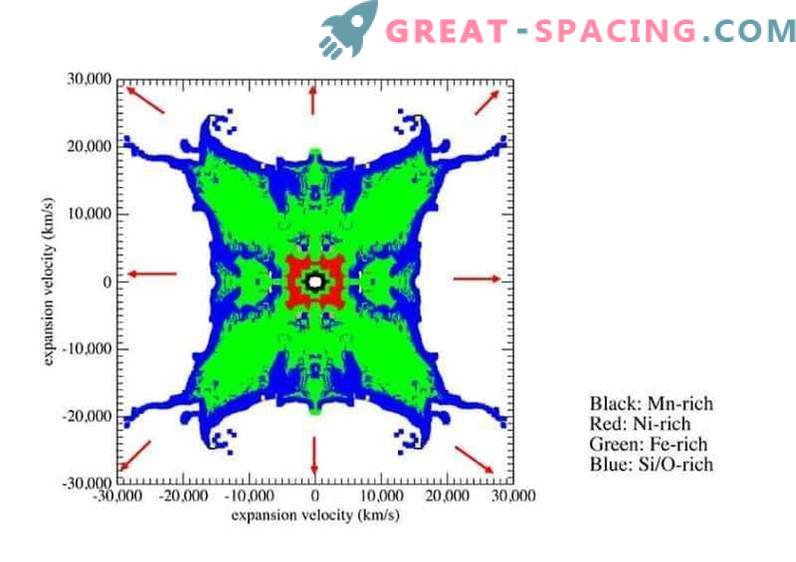
The distribution of representative elements displaces the velocity in a typical Ia-type supernova after the completion of all major nuclear reactions. Colors show where the corresponding elements are created. This provides important clues to the controversial discussion that the mass of a white dwarf is close to the Chandrasekhar limit in an Ia-type supernova explosion.

57Ni is contrasted to 56Ni. Observations of data from the supernova SN 2012cg are also added to the model. Data points along the line represent white dwarf models of masses from 1.30 to 1.38 solar
The results will be useful in future studies of the chemical evolution of galaxies for a wide range of metallic elements. In the future, they plan to test a model with a large amount of observational data and extend it to another subclass of Ia-type supernovae.
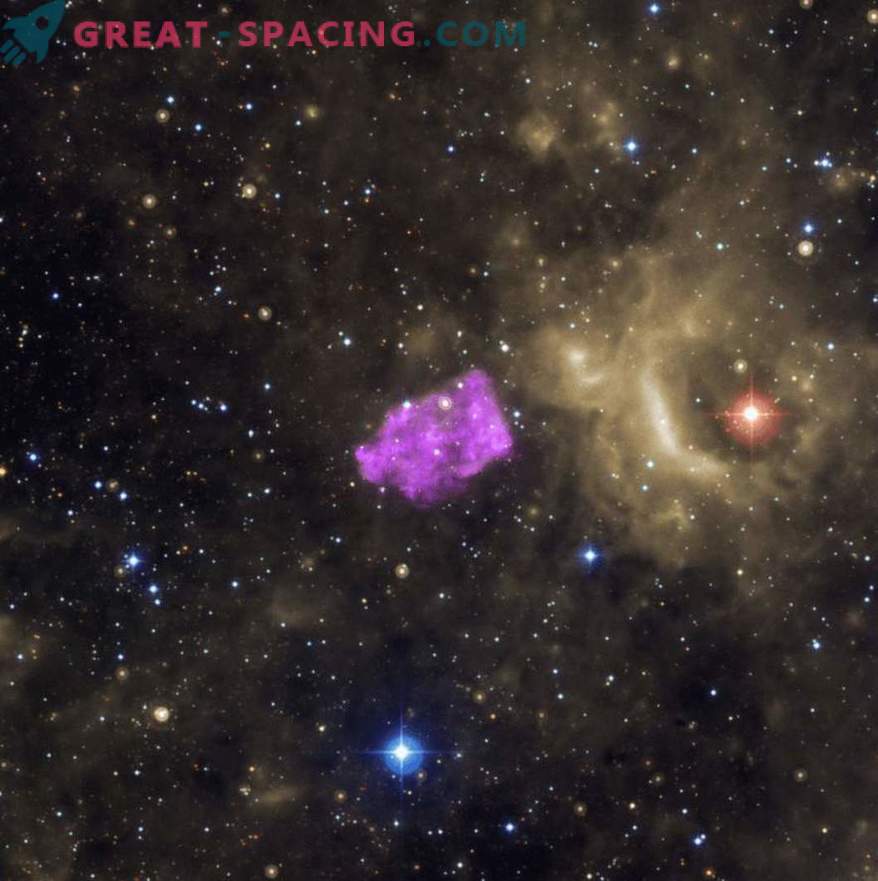
X-ray, optical and IR composite image
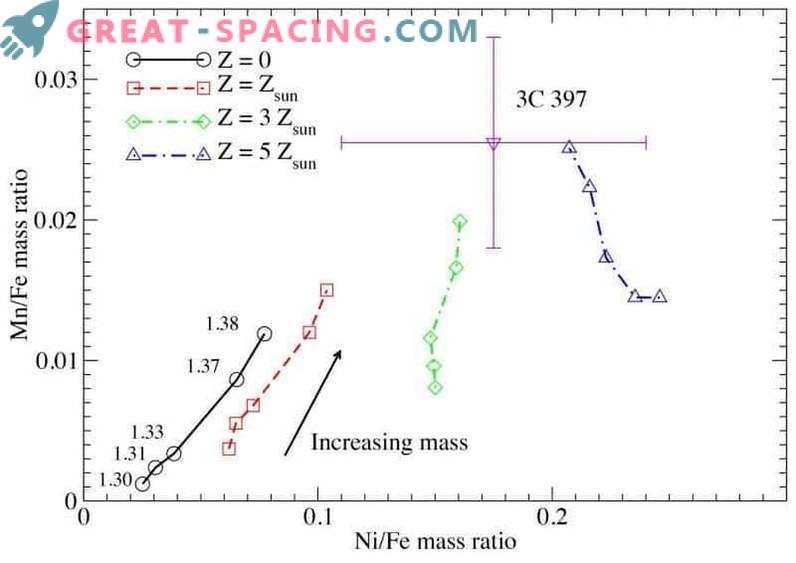
Mass ratio of Mn / Fe to Ni / Fe for models. The data from the supernova remnant 3C 397 was also included. The points along the line indicate white dwarf models of masses from 1.30 to 1.38 solar
